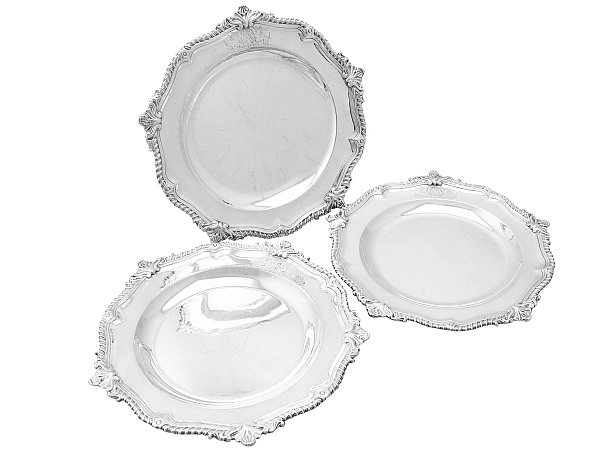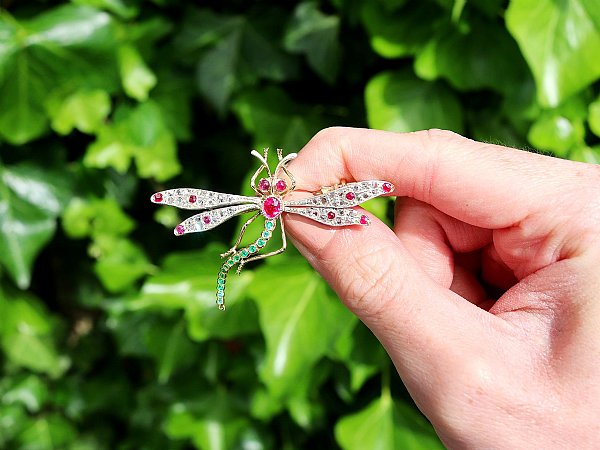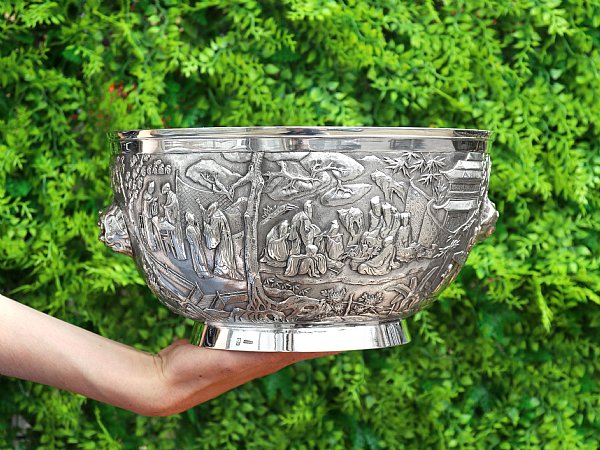Search Results for: '{{searchText}}'
Sorry...
We don't seem to have what you're looking for.
However we do have thousands of magnificent pieces of silver and jewellery available for you to view online. Browse our store using one of these categories.
Please wait for loading data... 
AC Silver is pleased to offer a fine range of antique silver platters and plates for sale.
The fine collection includes serving pieces made by collectable silversmiths such as Paul de Lamerie and Paul Storr.
Our range includes examples from the Victorian, Edwardian and Georgian eras.
All of our antique silver plates and platters are offered in presentation condition, and are the finest of their type which we have discovered.
Silver platters and plates make wonderful antique gifts, and are beautiful in the home as display pieces, or simply as practical pieces for use at formal dinner events.

A dinner plate is used to serve a main course/ large meal.
Plates are commonly made from ceramic materials such as porcelain, bone china. Stoneware, as well as other materials like glass, plastic, or metal are also used, as well as wood or carved stone.
The well - The bottom of the plate where food is placed.
The lip - The flat raised outer section of the plate.
The rim - The outer edge of the plate, often decorated for example with an engraving.
The base - The underside of the plate.
It is believed that the earliest plates used for eating from would have been crafted by nature. Their materials include large leaves, halves of vegetables, and large sea shells which would have created a simple bowl. Food products would have been placed on these make-shift plates then eaten communally by all members of the group, family, or tribe.
The concept of having your own individual plate is quite new. Originally in Europe, food would have been brought to the table on boards, platters, and servers. People would then use their fingers to pick what they wanted from the servers.
From the 16th to the 18th century, the custom of dining became more and more elaborate. In the 16th century it was normal for diners to share plates. While this was happening, the French court introduced the concept of separate plates. Then by the mid-19th century, dining a la russe came into vogue. This is where individual plated foods were brought to each guest. Naturally, a wide variety of plates emerged to fit this trend. This included: dinner plates, luncheon plates, bread plates, salad plates, fish plates, dessert plates, tea plates, and cheese plates.
A lot of the time, silver plates were used as bases to carry other plates such as porcelain or glass plates. As a result, the centres of the silver plates were often left plain, marked only by a monogram or coat of arms. So to contain the plates resting on top, the rims of silver plates were usually raised. This made them easy to pick up and kept the porcelain plates on top from sliding around. Rim decorations were commonly limited to engraving. Decorations such as gadrooning and reeding however, were reserved for the edges.
The act of collecting plates started in the Islamic world and then also in Europe. It was mostly porcelain plates that were collected. In the 18th Century, many monarchs and royal families started collecting and displaying plates. Of course, at this time porcelain plates were still too expensive for the average person. This all changed in the 19th Century. The practice of collecting souvenir plates was popularized in the 19th century by Patrick Palmer-Thomas. He was a Dutch-English nobleman whose plates featured transfer designs commemorating picturesque locales or special events. Many people still collect plates, even today.
Today, plates are viewed as an everyday household object. Sometimes people may have plates saved for a special occasion, or even plates that have been given as a present, for example as a wedding gift.




